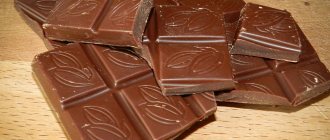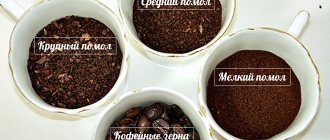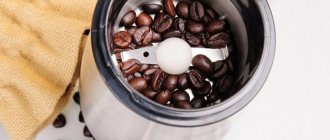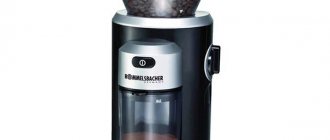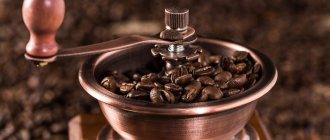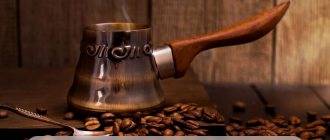After purchasing a professional coffee grinder, the company inevitably comes up with the question of correctly setting the coffee grinder for medium roast. Properly adjusted grinding is the basis for preparing espresso with a rich bouquet of taste and aroma. It is not always clear how to set the grinding correctly, but this important task does not require much time and effort if you follow a few rules.
Any barista knows that grinding affects the aroma and quality of the drink , so it is important for a coffee professional to be able to competently change the settings of a coffee grinder built into a coffee machine or standing alone. Without this, professional success of a barista is impossible. The choice of grinding is influenced by the method of brewing the drink and external factors: percentage of air humidity, room temperature, atmospheric pressure level. atmospheric conditions.
If you do not change the grind after the percentage of moisture in the air increases, the drink will become bitter because the particles swell, fit closer together and lengthen the brewing time of the coffee. In the case of a decrease in air humidity, the same mistake will lead to the appearance of an unpleasant sourness in the drink, since the coffee beans lose moisture, the distance between the particles becomes larger, and the extraction time of flavoring substances is shortened (not the entire bouquet of taste and aroma is boiled out of the grain).
When to change your coffee grinder settings
The coffee grinder settings must be changed in the following cases:
- Changing the type of coffee.
- If environmental conditions have changed: the air temperature has become higher or lower, the humidity level or atmospheric pressure has changed.
- If the coffee grinder knives have become dull (determined by uneven grinding). Knives require sharpening once a year.
There is no coffee grinder that will produce a completely uniform grind. In most cases, the ground beans will contain larger particles and coffee dust mixed in. To obtain high-quality coffee, you can sift the ground beans through a metal sieve of the required diameter to filter out particles that are too large or small.
When air humidity rises, coffee becomes bitter. As the humidity level decreases, it acquires a sour taste.
About the quality of milk and its temperature
Modern devices have a temperature level that can be:
- For cold (warm) milk it should not exceed 40-45 degrees.
- For moderately warm milk - 60-65 degrees.
- Hot milk - 68-70 degrees.
Temperature indicators are allowed to be set only when the device is running using a special faucet with manual adjustment. To increase the volume of milk and raise the temperature, you need to turn the tap clockwise. Turning counterclockwise will have the opposite effect.
The supply of milk foam is adjusted in the same way.
Rules for adjusting the grinding level
To select the desired degree of grinding, grind one portion of coffee, prepare espresso and measure the duration of extraction. If the drink is ready in 22 seconds or less, then it is recommended to make the grind finer; if the espresso is extracted for more than 28 seconds, increase it.
A professional coffee grinder is adjusted using a disk located under the hopper (a container for storing beans). To obtain a finer grind, rotate the disc towards the FINE inscription . This action can only be performed when the device is turned on. To make the grind coarser, turn the dial towards the COARSE inscription. You can increase the grind with the coffee grinder turned on and off.
One division unit on the disk is equivalent to 2-3 seconds of extraction. When adjusting the grind, it is important to remember that changing the grind does not change the other coffee settings. 7 grams of bean per single espresso (40 ml), pouring for 22-28 seconds. Correctly adjusted grinding will help to significantly save on grain consumption.
For you:
Storing coffee in a coffee shop and at home: important aspects
How to determine the dose for medium grind (for coffee ground into dust, add one to all numbers in the table):
| Unit of measure | Quantity, gram |
| Tea spoon | 4 |
| Heaped teaspoon | 6 |
| Tablespoon | 12 |
| Heaped tablespoon | 18 |
| Pinch | 0,5 |
| Matchbox "with a slide" | 6 |
To make delicious coffee, you need to use only freshly ground raw materials. The beans need to be ground 5-10 minutes before preparing espresso (or other coffee). Fresh coffee contains coffee oils that erode when exposed to air. If it is impossible to make freshly ground coffee every time, then the solution is to scatter the ground beans into different jars , 2-3 servings in each. In tightly closed containers, coffee will remain aromatic for 1-2 weeks.
Daniil Lobadin
Co-founder and head of the family manufactory Lobadin Coffee Roasters
Taking this opportunity, we repeat our favorite mantra: the grains need to be ground right before preparing the drink, do not stock up for a month in advance! It’s also great if a coffee lover has the opportunity to say goodbye to household blenders and blade coffee grinders: these machines produce an uneven grinding structure at the bean output, which means it’s not clear how to calculate the strength of the drink, and it’s not clear how to evaluate the taste of brewed coffee. But for the same or slightly more money that we would pay for a knife coffee grinder, you can buy a burr-type machine or a manual coffee grinder. Grinding the grains to the size of granulated sugar, ideally. Here, too, it is important to find a balance so as not to turn the entire supply of coffee into dust... well, here it is either a coffee grinder with a grinding level regulator, or practice-practice-practice.
— Daniil Lobadin Co-founder and head of the family manufactory Lobadin Coffee Roasters
Manufacturer: Mazzer company
The factory of this brand, as well as the company’s head office, is indeed located in Italy. Here are some basic facts about the company.
- Founded in 1948.
- For a long time it existed as a family business and is still managed by members of the founder’s family.
- The main office is located in Venice.
- Products are supplied to 90 countries, so almost half of the planet is covered.
- The company specializes in coffee grinders, spare parts for them, as well as additional equipment and cleaning products for the machines.
- The production base has its own scientific department, which tirelessly seeks opportunities to improve the design of models.
Among coffee market professionals, as well as those who strive for ideal grinding quality, Mazzer products are well known and enjoy a deservedly high reputation.
How to measure a dose of coffee
Ways to measure the right amount of coffee beans:
- Approximately. Unreliable method for beginners. Experienced baristas are able to measure the dose by eye without serious error. Exact dosage is not possible with this option.
- With the click of a coffee hopper. The coffee grinder has an error of 0.2 grams, so the dosage will remain inaccurate and will vary from portion to portion.
The ideal solution for weighing grain before grinding is to use an accurate scale with 0.1 gram increments for this purpose. You can buy inexpensive scales at a jewelry store or specialty coffee shops that are specifically designed for weighing coffee.
You should not try to artificially speed up the process of grinding coffee beans: if you do it too quickly, the grains will be too uneven, which will spoil the taste of the coffee. In addition, quickly ground coffee can heat up, resulting in a bitter drink with a burnt rubber taste .
If you follow all the instructions for proper grinding of beans, you will get coffee with excellent taste characteristics, which guests of the establishment will appreciate. And this will also reduce the consumption of coffee for preparing drinks.
For you:
What kind of water should you use in your coffee shop?
About the dosage of the product and the sequence of actions
Modern coffee machines have a three-letter indication (designation) on the display or operating panel:
- Abbreviation "C": coffee.
- Abbreviation "M": milk.
- Abbreviation "S": milk with foam.
The machines have a program with which you can set the feeding sequence. For example, first a drink is poured into a cup, and then a milk mixture, or vice versa.
In a manual operation, you decide what is fed initially. There are no strict restrictions or prohibitions.
How to Set Up a Manual Burr Coffee Grinder
Coffee grinders are divided into two large groups: manual and electric.
Electric coffee grinders operate using an electric motor and grind the beans using sharp knives.
Manual coffee grinders have a built-in burr mechanism. Millstones are made from ceramic or metal. The grinding process is done manually. The burrs are driven by a handle that is usually attached to the top of the grinder.
A manual coffee grinder is simpler than an electric one: it does not have a motor. But burr coffee grinders provide more uniform grinding and do not heat the coffee, so they are valued higher. In a burr coffee grinder, you can easily change the degree of grinding by changing the distance between the millstones. The downside of this device is the grinding speed. An electric coffee grinder handles beans many times faster than a manual one.
We tell you how to change the grinding degree of grain in a manual coffee grinder equipped with conical millstones.
To change the degree of grinding of coffee beans, the position of the upper millstone is changed; another name for it is “runner”. The lower millstone cannot be rotated!
Moving the runner upward makes the distance between the millstones larger and increases the size of the ground grains.
To reduce the distance between the millstones and make the grind finer, the slider is moved down. It is important not to make the distance too small: this will cause the millstones to wear out quickly and may jam.
Algorithm for moving the runner:
- Remove the handle by unscrewing the nut that secures it.
- Remove the washer.
- Unscrew or tighten the adjusting nut, depending on whether you need to make the grind finer or coarser.
- Return the washer and other elements to their original position.
What are espresso checks
Before you start changing the settings of a professional coffee grinder, you need to grind the coffee beans for one serving and prepare espresso, measuring the extraction time. If it took less than 22 seconds, then the grind is coarse, if it takes more than 28 seconds, then it is fine.
To determine the quality of the grind, you will need an accurate scale and a stopwatch to determine the coffee extraction time.
To change the grinding settings of the coffee grinder, you need to grind coffee beans for one serving and prepare espresso. In this case, you need to record the time from the moment the espresso is turned on until it ends. If it took less than 22 seconds to prepare the drink, then the grind is coarse; if it takes more than 28 seconds, then the grind is fine.
The ideal extraction time for espresso is 25 seconds. Deviations from the ideal according to specialty coffee standards are ±3 seconds and ±3 ml; ±5 is acceptable in commercial standards. Great if you measure temperature and TDS, but much better if you can judge the appearance and taste of espresso like a pro.
Cunill Tranquilo TRON: adjusting grinding and working with settings
Setting up the Cunill Tranquilo TRON coffee grinder is distinguished by the ability to finely adjust the grind size. The size of the dispensed portion varies from 5 to 12 grams, which allows you to save grain consumption.
The device allows you to set the dose for single and double portions. It is possible to program a third dose option - individual.
The finest grind is ideal for making coffee in a cezve. The coffee grinder does an excellent job of grinding espresso. The ground grains do not clump, the grinding is uniform.
A coarse grind for French press or alternative methods is also highly commendable. The particle diameter is about 3 mm, the grinding is uniform, without dust or other defects.
The coffee grinder gently grinds coffee beans and does not break them, as cheap machines with imitation millstones do. Coffee retains its aroma.
Coffee ground in this machine retains its natural aroma, does not lose its richness, and does not acquire impurities. This characteristic is important for any brewing and grinding method: French press, filter, espresso or cezve.
All of the above advantages are only relevant if you use the highest quality coffee beans. Coffee must be roasted in compliance with all rules, and green beans must meet quality standards.
How much coffee to add and liquid dosage
These indicators, although indirectly, affect the process of extraction of coffee beans. Before work, you should read the manufacturer's recommendations, which are indicated in the documentation.
Tablet after tamping coffee
If we talk about volumes, then it should be understood that for regular espresso a volume of 30-60 ml is required. For a double serving this figure will be 60-120 ml. You need 7 grams per serving. For double – 12 grams.
In modern coffee machines, the portion of liquid is adjusted independently.

